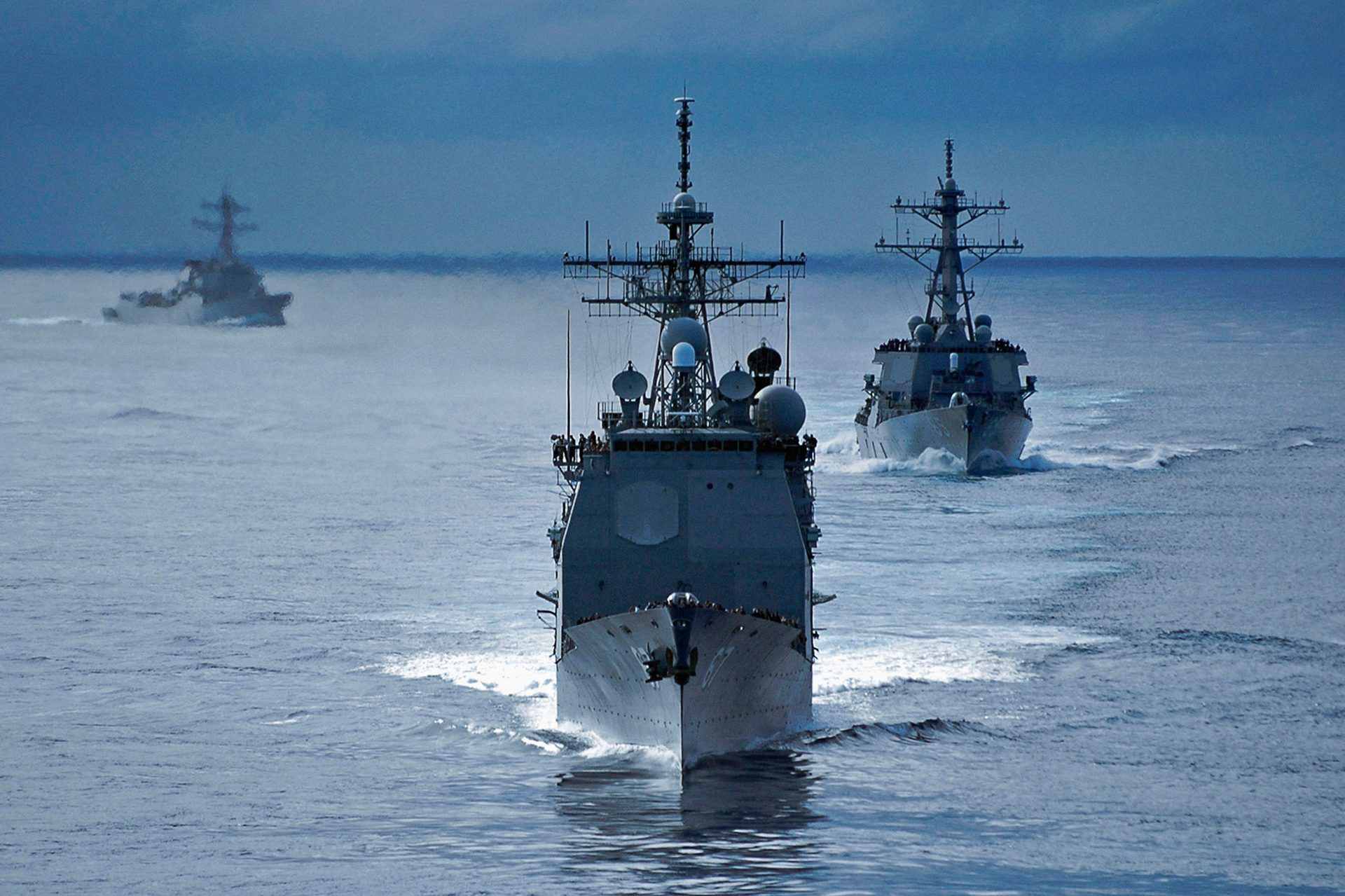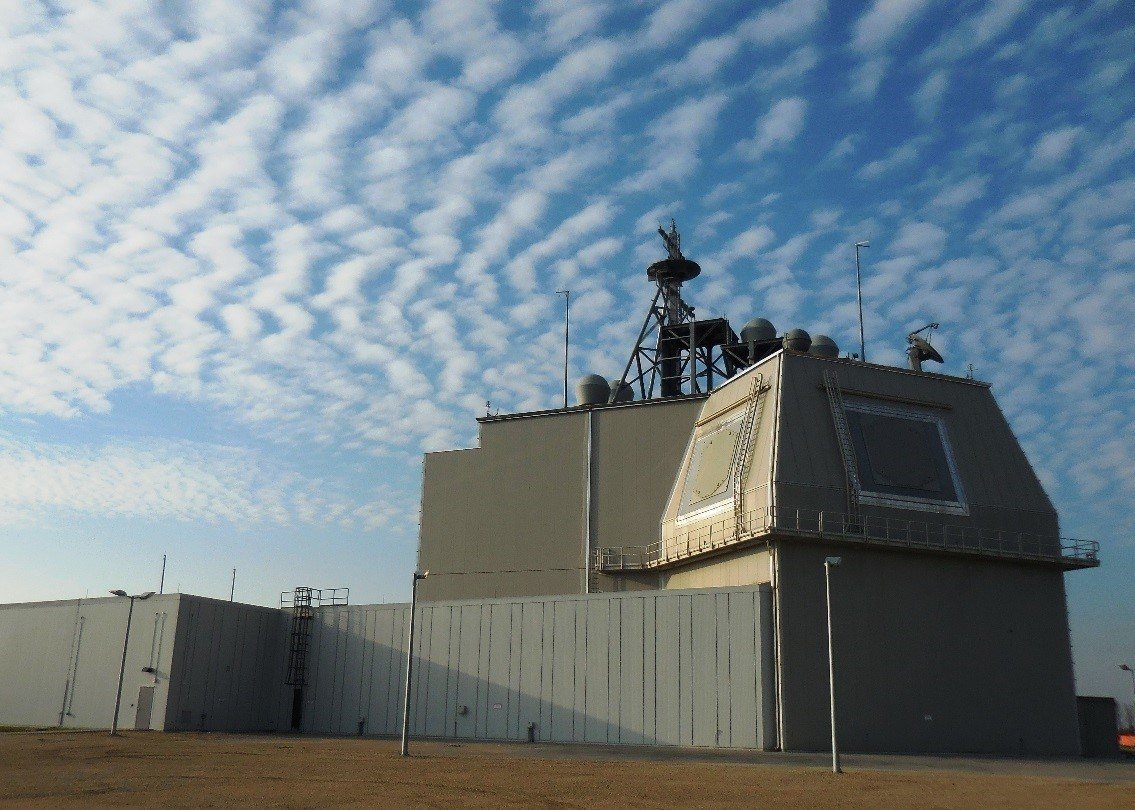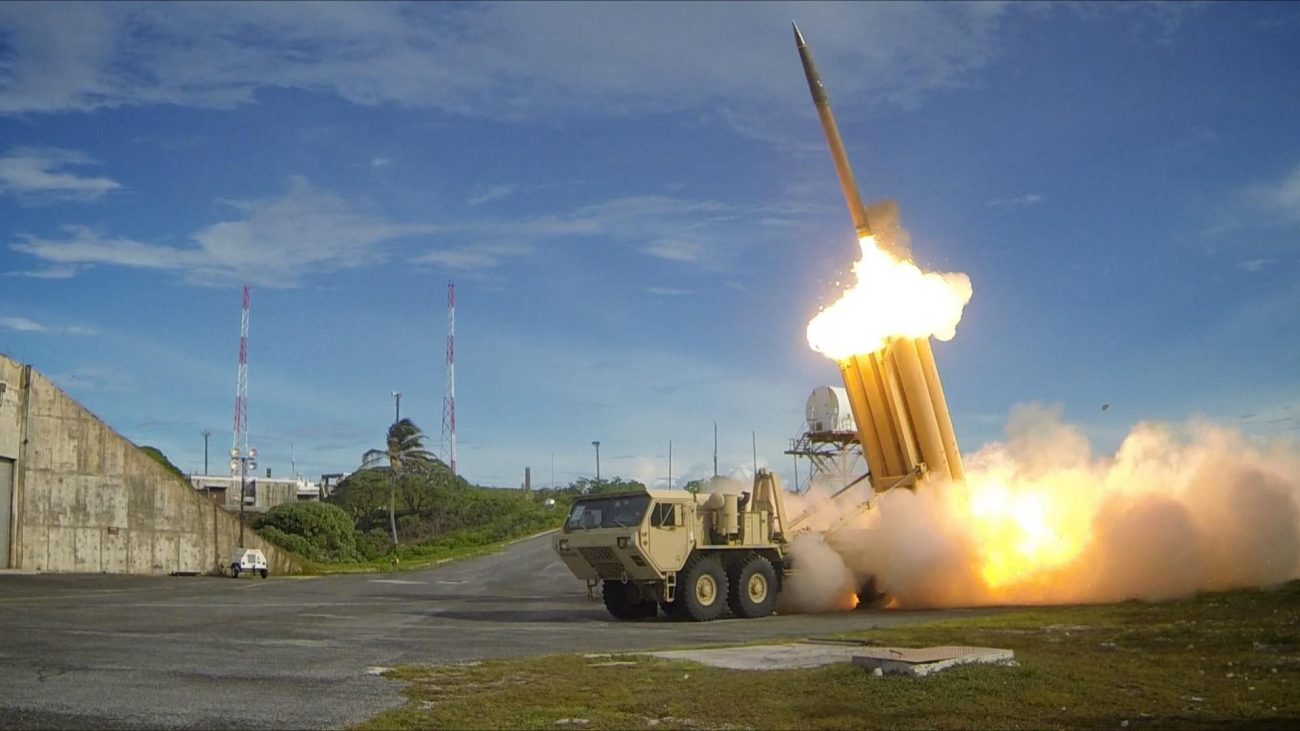How important is the role of the US Navy in protecting the US territories and the allies in the Indo-Pacific against missile attacks from adversaries like China and North Korea?
This is a question that both the Houses of the US Congress – Senate and House of Representatives – will deliberate on while granting the budget requests of the Missile Defense Agency (MDA) of the US Department of Defense (DOD).
The MDA is charged with the mission to develop, test and field an integrated and layered Ballistic Missile Defense (BMD) system to defend the United States, US deployed forces, US allies, and partners against ballistic missiles of all ranges and in all phases of flight.
The FY2023 budget request is $24.7 billion for missile defense and $9.6 billion for MDA to deal with “the Ballistic Missile Threats.”
It may be noted that after an initial powered phase of flight, a ballistic missile leaves the atmosphere and follows an unpowered trajectory or flight path before reentering the atmosphere towards a predetermined target.
Ballistic missiles effectively range from a few hundred kilometers to more than 10,000 kilometers. Short-range ballistic missiles (SRBMs) range from 300-1,000 kilometers and are generally considered for tactical military use. Medium-range ballistic missiles (MRBMs) range from 1,000 to 5,500 kilometers, although most are armed with conventional warheads that range less than 3,500 kilometers.
ICBMs (Intercontinental Ballistic Missiles) range from 5,500 kilometers and are generally considered strategic deterrent forces (with nuclear warheads).
US Ballistic Missile Defense System
The significant elements of the US BMDS include the Ground-Based Midcourse Defense (GMD) system, which is designed to destroy a limited attack in space from ICBMs; the Terminal High Altitude Area Defense (THAAD) system, a highly mobile, rapidly deployable system designed to shoot down incoming short- and medium-range missiles during their final or terminal phase of flight and protect a broad area coverage against threats to population centers and industrial resources as well as military forces; and Patriot Advanced Capability-3 (PAC-3), a mobile and transportable system designed to defend areas such as military bases and airfields from advanced aircraft, cruise missiles, and tactical ballistic missiles.
In some places, Patriot works with THAAD to provide an integrated and overlapping defense against attacking missiles in their final phase of flight.
Sea-Based Weapon Systems
While all these are land-based systems, “Sea-Based Weapon Systems” is the naval component of the MDA. US Navy destroyers and cruisers are equipped with the “Aegis Missile Defense system,” built upon the Aegis Weapon System, Standard Missile (SM), and Navy and joint forces’ Command, Control, and Communication systems.
The Aegis BMD program allows the US Navy to provide regional defense against short- and medium-range ballistic missile attacks.
“Aegis BMD Engagement Capability” is meant for defeating short- to intermediate-range, unitary and separating, midcourse-phase, ballistic missile threats with the SM-3 and short-range ballistic missiles in the terminal phase with the SM-6.
In 2020, it was also proved effective in intercepting a simple ICBM-threat representative target with an SM-3 Block IIA missile, illustrating how the system could be used in a layered missile defense architecture, enhancing US “Homeland Missile Defense.”

For Homeland Defense, “Aegis BMD ships on Ballistic Missile Defense patrol, detect and track ballistic missiles of all ranges — including ICBMs and report track data to the MDS.”
This capability shares tracking data to cue other missile defense sensors and provides fire control data to Ground-based Midcourse Defense interceptors located at Fort Greely, Alaska, and Vandenberg Air Force Base, California.
It may be noted that except for three Zumwalt [DDG-1000] class destroyers, all of the US Navy’s cruisers and destroyers are called Aegis ships because they are equipped with the Aegis ship combat system—an integrated collection of sensors, computers, software, displays, weapon launchers, and weapons named for the mythological shield that defended Zeus.
The Aegis system was initially developed in the 1970s to defend ships against aircraft, anti-ship cruise missiles (ASCMs), and surface and subsurface threats. The Navy first deployed the system in 1983, and it has been updated many times.
US Navy’s Aegis Vessels
The Navy’s Aegis ships include Ticonderoga (CG-47) class cruisers and Arleigh Burke (DDG-51) class destroyers. A total of 22 CG-47s (CGs 4722 ships are in operation, but they are to retire in phases. The Navy’s FY2023 budget submission proposes retiring five of the 22 ships in FY2023, 12 more in FY2024-FY2027, and the remaining five in years after FY2027.
The Navy now has a total of 70 DDG-51. Under the Navy’s FY2023 budget submission, the first DDG-51 will be retired in FY2027. The DDG-51 design has been updated multiple times over the years. The first 28 DDG-51s are known as Flight I/II DDG-51s.
The next 34, Flight IIA DDG-51s, incorporate some significant design changes, including adding a helicopter hangar. The version currently being procured, called the Flight III DDG-51 design, includes a new radar, the SPY 6 radar (and before that, the Air and Missile Defense Radar, or AMDR), that is more capable than the SPY-1 radar installed on CG-47s and earlier DDG-51s.
It may be noted that all Aegis ships are not BMD capable. Those who are so endowed can conduct BMD operations by incorporating changes to the Aegis system’s computers and software and arming the ships with BMD interceptor missiles.
Older Aegis ships can be modified to become BMD-capable ships, and DDG-51s have been built from the start with a BMD capability.
In fact, as part of MDA’s FY2022 budget submission, the designations of Aegis BMD system variants were changed and consolidated to 4.X, 5.X, and 6.X, with the X indicating multiple sub-variants.
BMD system variants correlate with certain versions of the overall Aegis system, which have their numbering system. In addition to addressing more challenging BMD scenarios, the more recent BMD variants give BMD-equipped ships the capability to simultaneously perform BMD operations against ballistic missiles and anti-air warfare (AAW) operations against aircraft and anti-ship cruise missiles.
Aegis Ships and the Aegis systems have been sold to US allies. Allies operating, building, or planning to build Aegis-equipped ships include Japan, South Korea, Australia, Spain, and Norway. Japan’s Aegis-equipped ships are BMD-capable, but the Aegis-equipped ships operated by South Korea, Australia, Spain, and Norway are currently not BMD-capable.
The BMD interceptor missiles Aegis ships use the Standard Missile-3 (SM-3) and the SM-6. The SM-3 is designed to intercept ballistic missiles above the atmosphere (i.e., exo-atmospheric intercept) in the midcourse phase of an enemy ballistic missile’s flight. It is equipped with a “hit-to-kill” warhead, a kinetic vehicle designed to destroy a ballistic missile’s warhead by colliding with it.
The current versions of the SM-3 missile include the SM-3 Block IA, the SM-3 Block IB, and the SM-3 Block IIA, depending on the size the diameters. The increase in diameter is said to provide more room for rocket fuel to have a burnout velocity.
The United States and Japan have cooperated in developing certain technologies for the Block IIA version, with Japan funding a significant share of the effort.
The SM-6 is MDA’s and the Navy’s more capable next-generation sea-based terminal-phase (i.e., endo-atmospheric) BMD interceptor. It is based on the SM-6 air defense missile (the Navy’s successor to the SM-2 air defense missile). The SM-6 is a dual-capability missile that can be used for either air defense (i.e., countering aircraft and ASCMs) or ballistic missile defense.
The SM-6 missile is the only weapon in the US arsenal to engage highly-maneuverable hypersonic threats.
In FY 2023, Aegis SBT is supposed to demonstrate a simulated engagement against a hypersonic target (FTX-40); in FY 2024, it is to demonstrate a salvo engagement firing two SM-6 Block IA upgraded guided missiles against a Hypersonic Glide Vehicle target.
Reportedly, Raytheon Technologies and Northrop Grumman have each won contracts to continue developing hypersonic weapons interceptors in a Missile Defense Agency-led competition.
The interceptors are intended to counter a hypersonic weapon during its glide phase of flight, a challenge as the missiles can travel more than five times the speed of sound and can maneuver, making it hard to predict a missile’s trajectory. The interceptors will be designed to fit into the Navy’s current Aegis Ballistic Missile Defense destroyers.
MDA’s FY2023 budget submission states that “by the end of FY 2023, there will be 50 total BMDS [BMD Systems] capable [Aegis] ships requiring maintenance support.” But, the Navy’s 2016 Force Structure Assessment was that the US needed at least 54 BMD-capable ships as part of the 104 large surfaces combatant requirement. Though the number of such vessels that the US currently has is not officially disclosed, some say it could be 33.
The land-based version of the Aegis BMD system is called Aegis Ashore. There are two Aegis Ashore sites in Europe—one in Romania and one in Poland. The sites are intended to help defend Europe against ballistic missile threats from countries like Iran.
Each Aegis Ashore site includes a structure housing an Aegis system similar to the deckhouse on an Aegis ship and 24 SM-3 missiles launched from a relocatable Vertical Launch System (VLS) based on the VLS that is installed in Navy Aegis ships.

Before June 2020, Japan had planned to procure and operate two Aegis Ashore systems that reportedly were to have been located at Ground Self-Defense Force (GSDF) facilities in Akita Prefecture in eastern Japan and Yamaguchi Prefecture in western Japan and were to have been operated mainly by the GSDF.
However, Japan has decided to shelve this program and will build two more BMD-capable Aegis ships instead.
The two Aegis destroyers are expected to have a displacement of around 20,000 tons with a length of 690 feet and a beam of about 130 feet, making them one of the largest and heaviest ships that the JMSDF will operate.
The ships are to have a crew of 110 personnel, with personnel accommodations being enhanced to enable long deployments on stations around Japan.
As it is, Japan already operates eight BMD-capable Aegis destroyers—the eighth was commissioned into service in March 2021. As mentioned earlier, Japan has cooperated with the United States to develop the SM-3 Block IIA missile.
Japan developed certain technologies for the missile and paid for developing those technologies, reducing the missile’s development costs for the United States.
Other countries MDA views as potential naval BMD operators (using either the Aegis BMD system or some other system of their own design) include the United Kingdom, the Netherlands, Spain, Germany, Denmark, and Australia.
Spain, South Korea, and Australia either operate, are building, or are planning to build Aegis ships. The other countries operate destroyers and frigates with different combat systems that may have the potential to contribute to BMD operations.
Aegis In The Indo-Pacific
Coming to the Indo-Pacific, the Pentagon wants an increased role of Aegis BMD in the New Guam Missile Defense Architecture. After studying various possible BMD system architectures for Guam, DOD proposes a system that combines elements of the Aegis BMD system with aspects of Army BMD systems.
The defense architecture at Guam may be adequate against threats from North Korea, but Pentagon thinks that to meet the Chinese threats, the defense structure should be a distributed system, using mobile launchers of Navy SM-3 and SM-6 missiles, the Patriot air-and-missile defense system and the Army’s Terminal High Altitude Area Defense System (THAAD).

Similarly, the Pentagon is planning to operationalize, either temporarily or permanently, the Aegis Ashore Missile Defense Test Center in Kauai, Hawaii, to strengthen the defense of Hawaii against North Korean missile capabilities.
Above all, the Aegis BMD program is working on what the US Navy says “Future Capabilities” in the areas of engagement of longer-range and more complex ballistic missiles; enhanced terminal capability against short and medium-range ballistic missiles; increased number of ships and missiles; more maritime ally involvement; and hypersonic missile defense in all phases of flight.
And all this needs money. Congress has to decide the burden that BMD operations may be placed on the Navy’s fleet of Aegis ships and whether there are alternative ways to perform BMD missions now performed by US Navy Aegis ships.
- Author and veteran journalist Prakash Nanda has been commenting on politics, foreign policy on strategic affairs for nearly three decades. A former National Fellow of the Indian Council for Historical Research and recipient of the Seoul Peace Prize Scholarship, he is also a Distinguished Fellow at the Institute of Peace and Conflict Studies.
- CONTACT: prakash.nanda (at) hotmail.com
- Follow EurAsian Times on Google News




